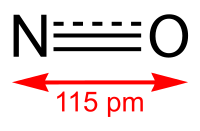
Photo from wikipedia
Abstract Due to the exchange of momentum at the junction between the main channel and floodplain, the prediction of stage discharge relationship in a compound channel is not an easy… Click to show full abstract
Abstract Due to the exchange of momentum at the junction between the main channel and floodplain, the prediction of stage discharge relationship in a compound channel is not an easy task as in simple channel. Despite the availability of 2D and 3D flow models, 1D flow models are rather preferred for its fewer data requirements, easy access and shorter processing time. As a substitute, a simple 1D methodology is proposed here which includes effects due to lateral momentum transfer at junction by introducing a momentum transfer coefficient between the adjacent compartments. The model estimates the individual flow carried by the two compartments of an asymmetric compound channel considering the percentage boundary shear force distribution as an input parameters. The boundary shear force carried by floodplain is parameterized in terms of the channel dimensions, flow depth and roughness characteristics. The resulting average flow velocities in sub-sections and momentum transfer coefficient at junction are determined from a set of physics based equations. Utilizing the outputs, the quantification of momentum exchange in terms of apparent shear force is achieved by the difference between main channel and floodplain flow velocities along with this momentum transfer coefficient. Experiments are undertaken to investigate the asymmetric geometry in flow distribution of a compound channel. The performance of the method in calculating overall discharges competes well with previous investigators models, seven traditional methods and Conveyance estimation system (CES). The new model and its corollary are tested for their validity against the experimental channels and also found to predict the discharge well in real world application.
Journal Title: Journal of Hydro-environment Research
Year Published: 2019
Link to full text (if available)
Share on Social Media: Sign Up to like & get
recommendations!